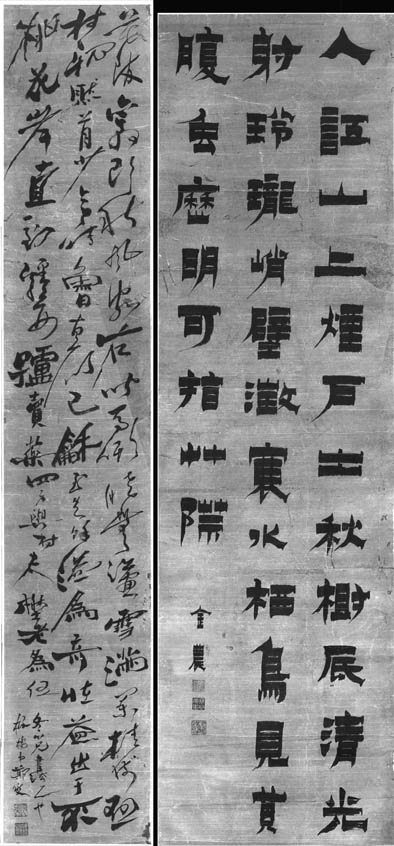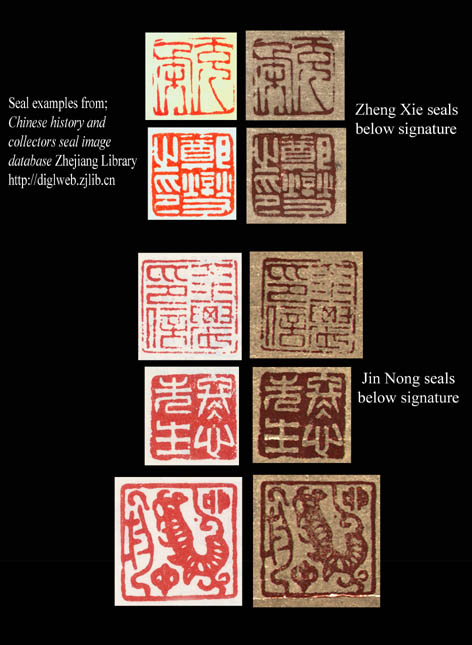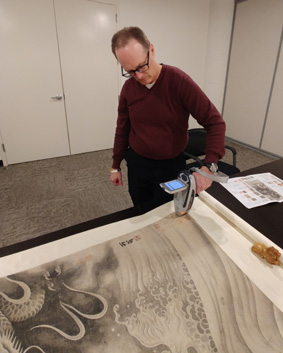
|
Subject:Re: Calligraphy question
Posted By: I.Nagy Fri, Oct 19, 2018
Before the XRF result on the seal paste arrives,
I deliver you the readings of colophones,
Right side,
金農 - Jin Nóng
Seals,
金農印信 - Jin Nong yinxin - Official seal of Jin Nong
冬心先生 - Dongxin xiansheng - Master Dongxin (Winter Heart) - Pseudonym
Pictogram seal,
龍虎丁卯 - Longhu dingmao - (Dragon Tiger, Year of Fire-Rabbit) - Leisure seal - Artist was born in the year of Fire-Rabbit (1687)
Jin Nong 金農 1687-1763
Left side,
Inscption,
冬心兄書法之也 - Calligraphy in the style of Donxin Elder Brother
(Dongxin was the pseudonym of Jin Nong)
板橋弟 - Banqiao Younger Brother
(Banqiao was the pseudonym of Zheng Xie)
鄭燮 - Zheng Xie
Upper seal,
克柔 - Keirou - Courtesy name
Lower seal,
鄭燮之印 -Seal of Zheng Xie
Zheng Xie 鄭燮 1693-1765
As of thev above Lishu (Official sript style) and Caoshu (Cursive script style) texts are not really difficult to decipher - maybe time consuming only.
With regards,
I.Nagy
|
 Calligraphy question
Calligraphy question  ( China & Japan ) - John R - Oct 17, 2018 (01:46 AM)
( China & Japan ) - John R - Oct 17, 2018 (01:46 AM)  Re: Calligraphy question - I.Nagy - Oct 19, 2018 (08:25 AM)
Re: Calligraphy question - I.Nagy - Oct 19, 2018 (08:25 AM)  Re: Calligraphy question
Re: Calligraphy question  - John R - Oct 25, 2018 (11:11 PM)
- John R - Oct 25, 2018 (11:11 PM)  Re: Calligraphy question
Re: Calligraphy question  - John R - Oct 26, 2018 (12:30 AM)
- John R - Oct 26, 2018 (12:30 AM) 







